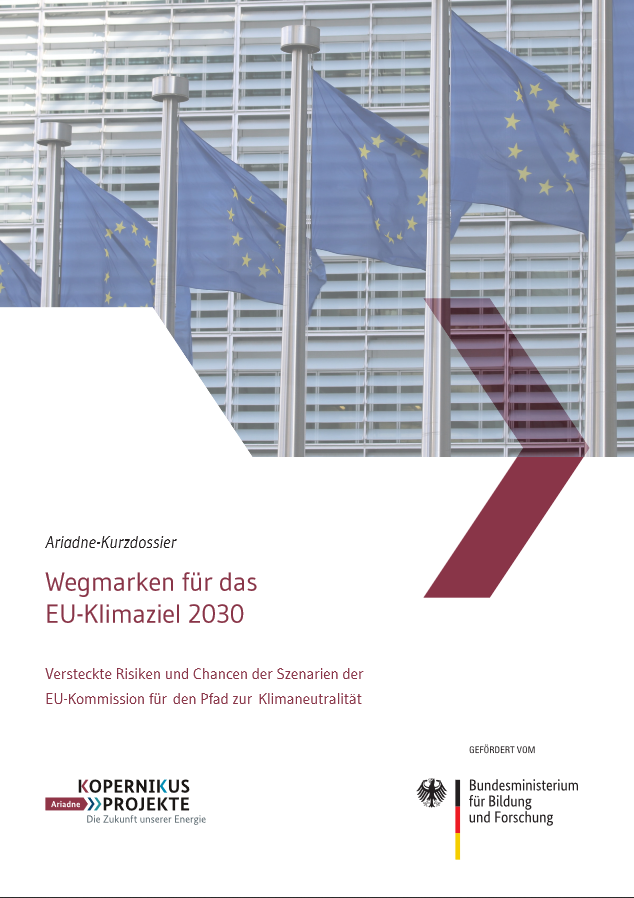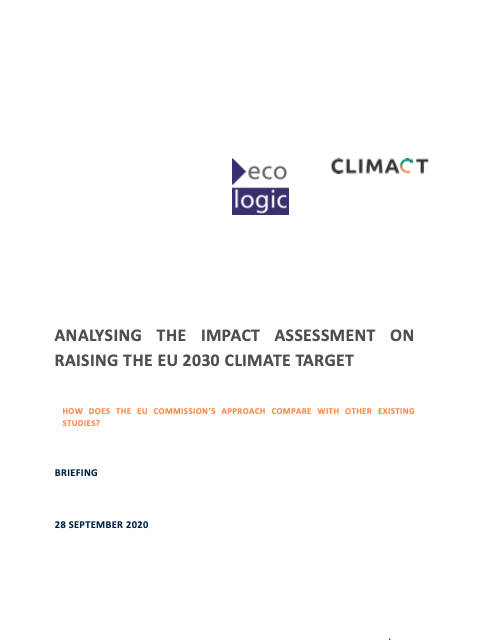Wegmarken für das EU-Klimaziel 2030
Versteckte Risiken und Chancen der Szenarien der EU-Kommission für den Pfad zur Klimaneutralität
- Publication
- Citation
Knodt, M., Pahle, M., aus dem Moore, N., Edenhofer, O., Fahl, U., Görlach, B., Kosch, M., Pause, F., Perino, G., Schlacke, S. (2020): Wegmarken für das EU-Klimaziel 2030, (Ariadne Kurzdossier), Potsdam: Kopernikus-Projekt Ariadne, Potsdam-Institut für Klimafolgenfoschung (PIK).
The EU Commission agreed on a more ambitious greenhouse gas target of at least 55% reduction by 2030. This policy brief presents the different options for how to get there and how to make the EU fit for 55%. It was published as part of the Ariadne project.
The policy brief discusses the different policy pathways to reach the climate target, as presented in the EU Commissions Impact Assessement of the 2030 target plan. There are different ways how the EU can reduce emissions to -55%: mainly through tighter regulation and standards, primarily via carbon price or trough a mix of both. The policy mix route may seem most attractive: politically, it is the path of least resistance, as it continues on the current trajectory. And it promises the best of both worlds – the efficiency of carbon pricing and the certainty of regulatory approaches. At the same time, the mix has some conceptual arguments in favor: companion policies, like standards and infrastructure investment, ensure that consumers have more climate-friendly options to choose from and bring down their cost. Thereby, they make it easier to stomach higher carbon prices.
However, as the policy brief elaborates, the policy mix carries a hidden risk to end up with an inconsistent and incoherent accumulation of overlapping policies, driving up costs and ultimately even jeopardizing target achievement – if it becomes unclear which instrument is meant to address which problem. In this way, the path of least resistance could also lead into a costly deadlock.
As the EU moves towards much greater ambition, the next years will be decisive. A haphazard mix of inconsistent climate policies that send inconsistent signals, and thereby delay the necessary investment, creates a risk for missing the 2030 target. A credible policy mix should thus be based on a clear regulatory principle, and be fully aligned with the climate targets. With carbon pricing as the cornerstone of the mix, accompanying regulatory instruments need to address barriers and obstacles which the carbon price cannot reach. Finally, a policy mix for the -55% objective should also include monitoring mechanism that regularly reviews the performance of the mix, and adjusts accordingly. This could be one chief task of an independent scientific advisory board, e.g. the proposed EU Climate Change Council.









